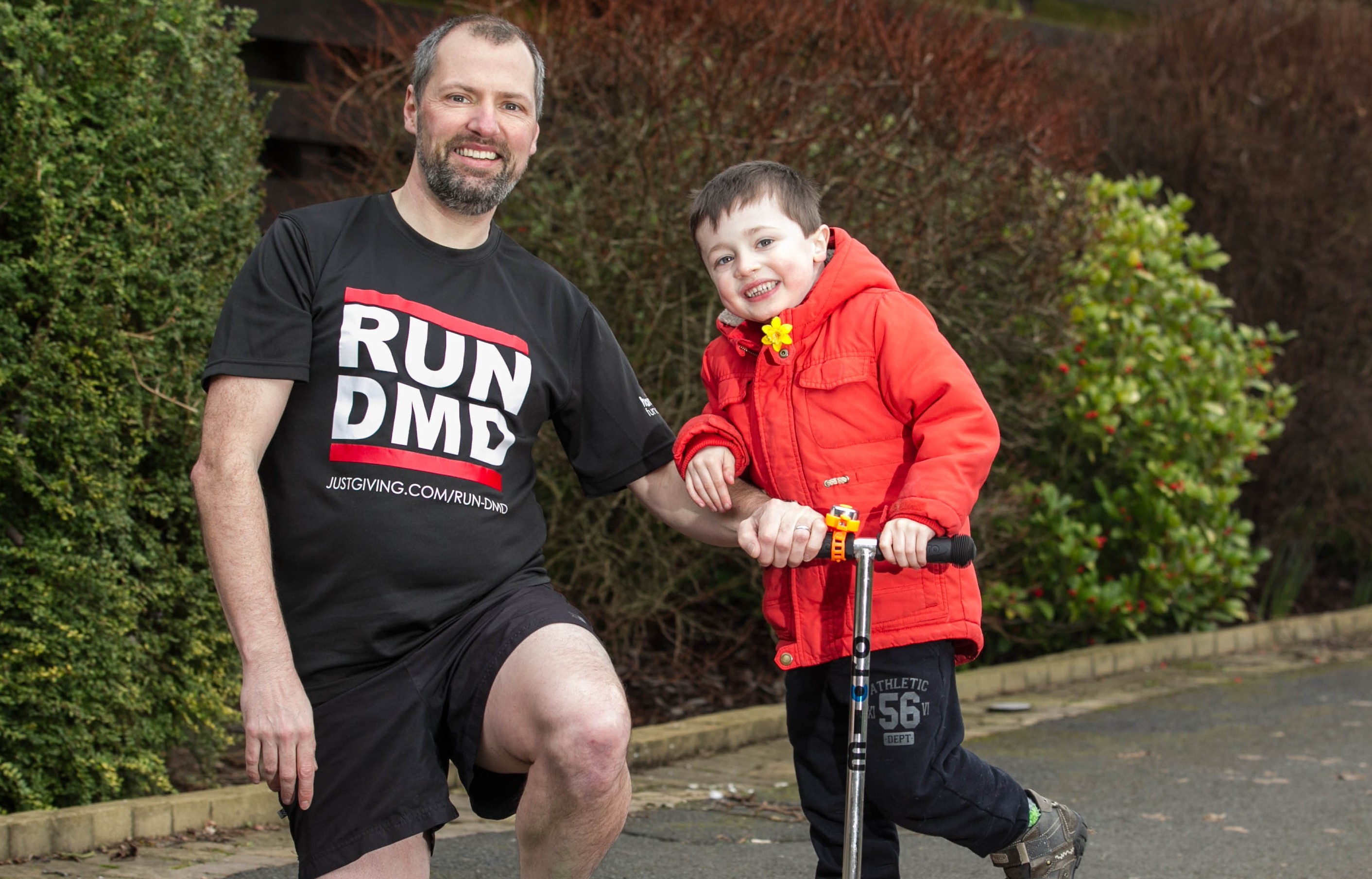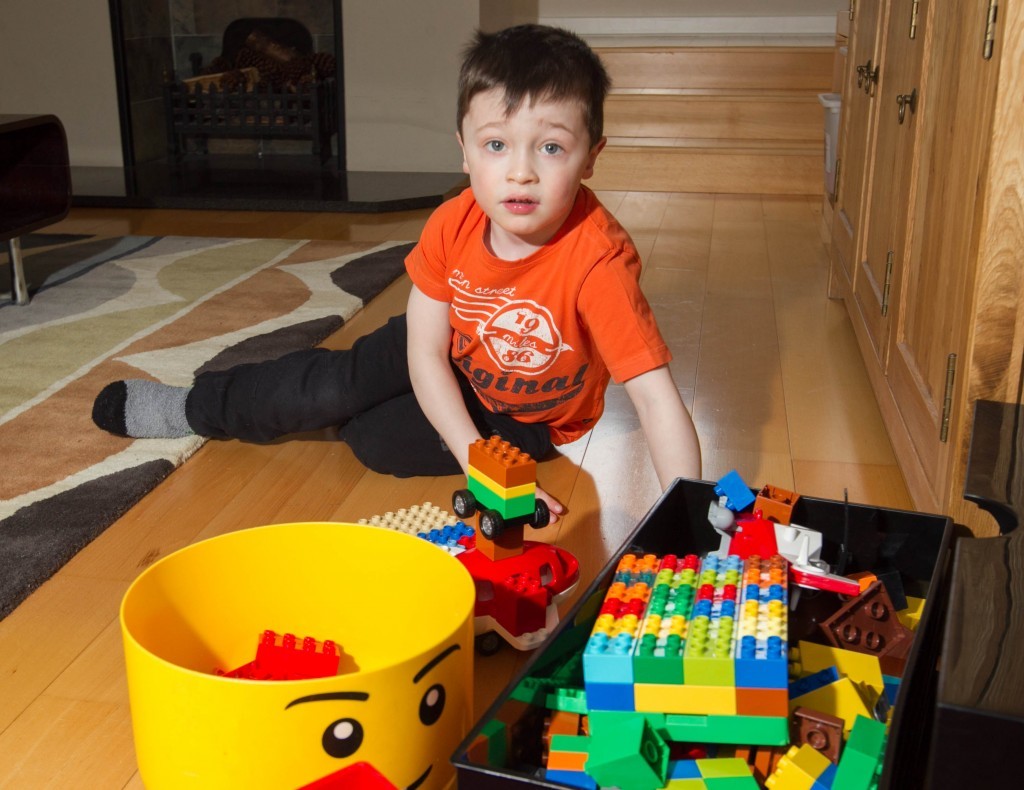
Cormac Fegan, 5, from East Lothian, has the muscle-wasting condition Duchenne Muscular Dystrophy which mostly affects boys. Those afflicted usually need a wheelchair by their early teens and rarely live beyond their twenties.
For three months he’s been the only person in the UK to have treatment with a new drug, Translarna, paid for by the NHS, at a cost of £200,000 a year.
NHS East Lothian has agreed to fund his treatment for six months but the Scottish Medicines Consortium is considering whether it can be recommended for use across Scotland. A decision is due soon.
Before his treatment began, Cormac suffered behavioural as well as physical problems. He frequently bit other children and was having trouble walking.
His father Gary, 43, says Translarna has made a huge difference.
Gary said: “The biting has disappeared and his behaviour is much better. It was almost an overnight change. He started on the drug on a Thursday and his behaviour had changed by the Saturday.
“Physically, it’s more subtle. It was a month before we noticed a change. His balance and speed have improved steadily since.”
Although Translarna doesn’t cure Duchenne, families like the Fegans believe it could buy vital time for their children.
“It slows the symptoms, and allows time for other treatments to become available”, said Gary.
“There are about 50 families in England, three or four in Northern Ireland and five eligible in Scotland.
“In Scotland they expect one new case a year.”
Two years ago, noticing he was having trouble with things like jumping, Gary and wife Ella took Cormac to see a paediatrician. After tests, the family received the devastating news.
“I was working in London. I recall sitting at Heathrow with my head in my hands, weeping as I waited to board the flight. At that time we were told that tests or trials would be unlikely to help him but might benefit the next generation.”
The family was told nothing could be done, but then learned some families on trials of Translarna had reported positive results. They put in an individual funding request to NHS Lothian.
It’s not yet clear whether funding will continue if the drug is not approved.
The National Institute for Health and Care Excellence, which examines new drugs in England and Wales, is to issue guidance on Translarna this month.
During the wait for the decision Gary has been raising money for Harrison’s Fund, a charity which funds research into Duchenne www.justgiving.com/RUN-DMD
For more information on Duchenne Muscular Dystrophy visit www.harrisonsfund.com
READ MORE
Always hungry but never full: Siblings save Zach from life-threatening Prader-Willi Syndrome
Young boy must wear sun cream every day to prevent secondary cancer

Enjoy the convenience of having The Sunday Post delivered as a digital ePaper straight to your smartphone, tablet or computer.
Subscribe for only £5.49 a month and enjoy all the benefits of the printed paper as a digital replica.
Subscribe